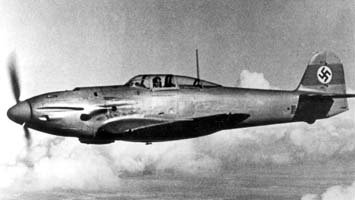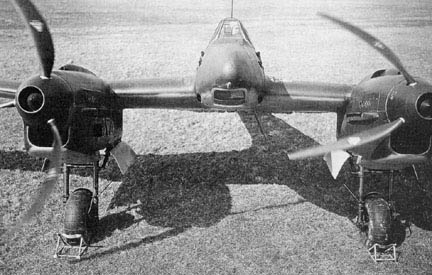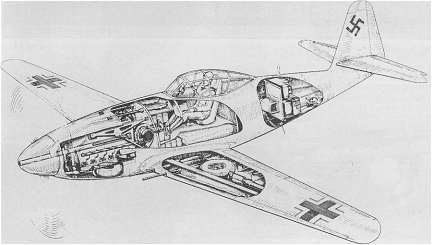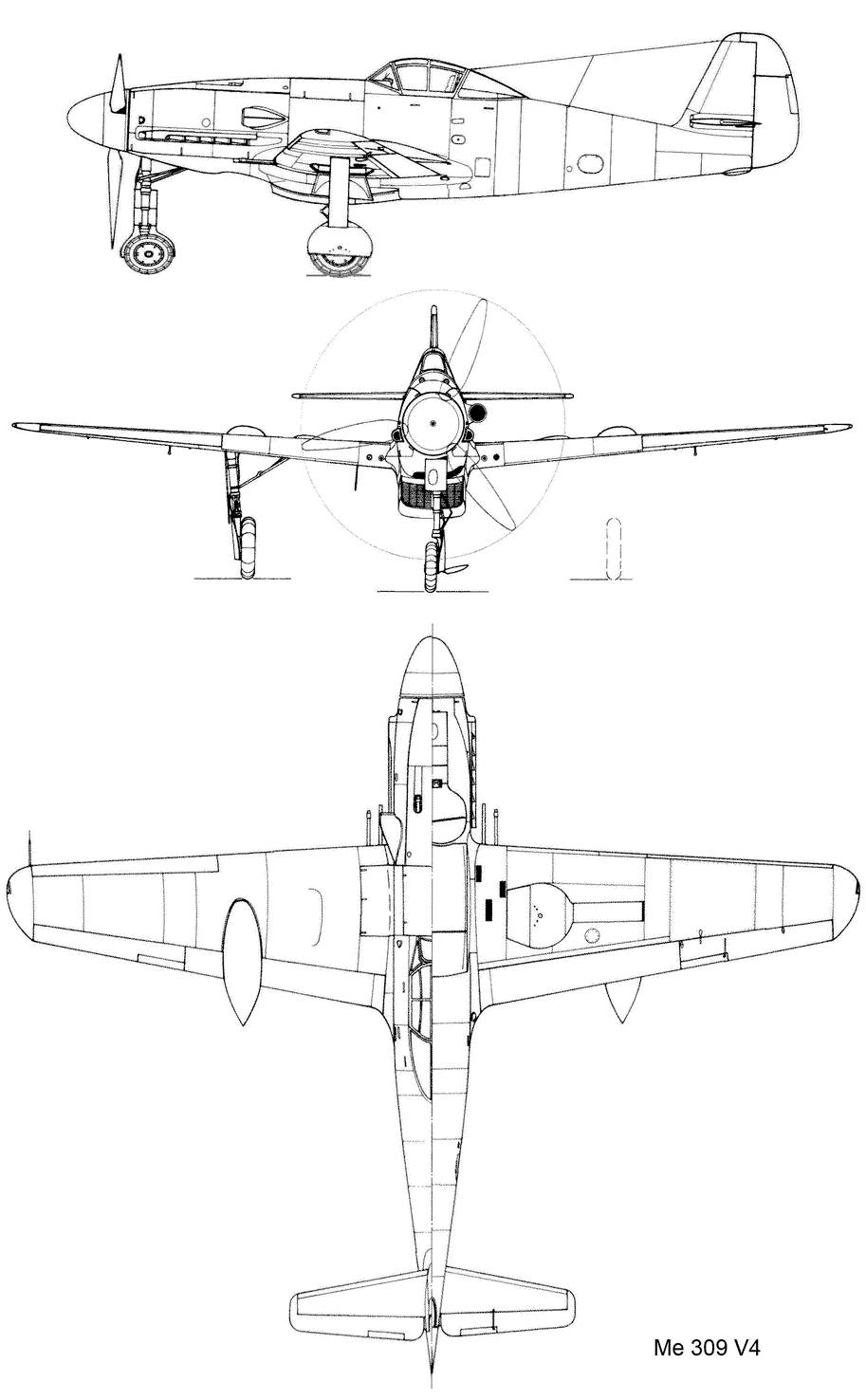He-112 development.
During 1933 the Technisches Amt (the technical department of the RLM) concluded a series of research projects into the future of air combat. The result of the studies were four broad outlines for future aircraft:
Rüstungsflugzeug I for a multi-place medium bomber
Rüstungsflugzeug II for a tactical bomber
Rüstungsflugzeug III for a two-place heavy fighter
Rüstungsflugzeug IV for a single-place fighter
The Rüstungsflugzeug IV was intended to be a Verfolgungs-Jagdeinsitzer (single-seat fighter), and the requirements were not terribly hard to meet. The plane needed to have a top speed of 400km/h at 6000m (250mph at 19,500ft) which it could maintain for 20 minutes, while staying in the air for a total of 90 minutes. It also needed to be armed with at least three machine guns with 1000 rounds each, or one 20mm cannon with 200 rounds. One other interesting specification was that the plane needed to keep wing loading below 100kg/m2, which is a way of defining the plane’s ability to turn and climb. The priorities for the plane were level speed, climb speed, and then maneuverability (in that order).
In October 1933 Hermann Göring sent out a letter requesting aircraft companies consider the design of a “high speed courier aircraft” — a thinly veiled request for a new fighter. In May 1934 this request was made official and the Technisches Amt (the technical department of the RLM) sent out a request for a single seat interceptor for the Rüstungsflugzeug IVrole, this time under the guise of a “sports aircraft”.
The specification was first sent to the most experienced fighter designers, Heinkel, Arado, and Focke-Wulf. The request was later sent to newcomer Bayerische Flugzeugwerk (Bavarian Aircraft Manufacturers, or BFW), on the strength of their Bf 108 “Taifun” advanced sports plane design. Each company was asked to build three prototypes for run-off testing. By the spring of 1935 both the Arado and Focke-Wulf planes were ready.
The primary source of inspiration for the 112 is the earlier He 70 “Blitz” (Lightning). The Blitz was a single engine, 4-passenger plane originally designed for use by Lufthansa, and it in turn was inspired by the famous Lockheed Orion mailplane. Like many civilian designs of the time the plane was pressed into military service, and was used as a two seat bomber (although mostly for reconnaissance) and served in this role in Spain.
Vs the BF-109
The Contest
The 112V1 started off the head-to-head contest when it arrived at Travemünde on the 8th of February, 1936. The other three planes had all arrived by the beginning of March. Right away the Fw 159 and Ar 80 proved to be rather lacking in performance, and plagued with problems. It was clear that the contest was really between the He 112 and the Bf 109.
At this point in the program the 112 was still the favorite over the “unknown” 109, but opinions changed when the Jumo powered 109V2 arrived on the 21st of March. From that point on it started to outperform the 112 in almost every way, and even the arrival of the 112V2 with the Jumo engine on the 15th of April did little to address this imbalance.
As would be expected the 112 had better turn performance due to it’s larger wing, but the 109 was faster at all altitudes and had considerably better agility and aerobatic abilities. During spin tests on the 2nd of March, the 109V2 showed no problems while the 112V2 crashed. Repairs were made to the plane and it was returned in April, but it crashed again and was written off. The V1 was then returned to Heinkel on April 17th, and fitted with the clipped wings.
V1 first proto.


V2.

Meanwhile news came in that Supermarine had recently received a contract for full scale production of the Spitfire, and this caused a wave of concern in the higher command of the Luftwaffe. Time now took on as much importance as any quality of the plane itself, and the RLM was ready to put any reasonable design into production.
That reasonable design was the Bf 109. On the 12th of March the Commission wrote up the outcome of their meetings in a document called “Bf 109 Priority Procurement”. The plane that was considered a long shot for most of the program suddenly found itself leading the race. But there were some who still favored the Heinkel design, and as a result the RLM then sent out contracts for 15 “zero series” planes from both companies.
Testing continued until October, at which point some of the additional zero series planes had arrived. At the end of September there were four He 112’s being tested, yet none was a clear match for the 109. This was likely the final nail in the 112’s coffin, from October on the Bf 109 appears to have been selected as the winner of the contest.





























